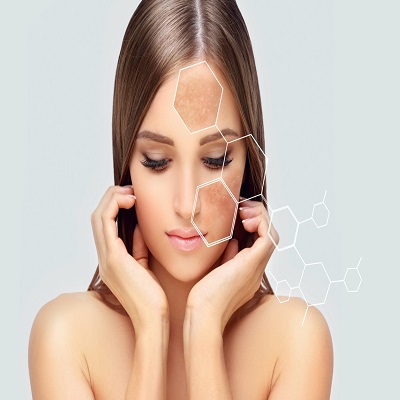Melasma is a chronic skin condition characterized by brown or grayish patches, typically appearing on the face. While it affects both men and women, the vast majority of cases occur in women, especially those of reproductive age. Among the many contributing factors, hormones play a significant role in the development and progression of this condition. Women in Pakistan, particularly in urban environments like Islamabad, face heightened risk due to a combination of hormonal fluctuations and environmental triggers. For those seeking effective Melasma Treatment in Islamabad, understanding the influence of hormones is critical in managing the condition.
Understanding the Hormonal Connection
Hormones are biochemical messengers that regulate numerous physiological processes in the body, including skin pigmentation. Melasma is believed to be closely linked to fluctuations in estrogen and progesterone, which can stimulate melanocytes—the skin cells responsible for producing melanin.
Estrogen enhances the activity of tyrosinase, an enzyme essential for melanin synthesis. When estrogen levels rise, such as during pregnancy or with the use of hormonal contraceptives, it can lead to overstimulation of melanocytes, causing the characteristic hyperpigmentation associated with melasma.
When Do Hormonal Changes Trigger Melasma?
Several stages in a woman’s life involve significant hormonal shifts that can either trigger or worsen melasma:
1. Pregnancy (Chloasma or the “Mask of Pregnancy”)
Pregnant women often experience increased levels of estrogen and progesterone, which can activate melanin production. Melasma that develops during pregnancy is often referred to as “chloasma.” It typically appears on the cheeks, forehead, nose, and upper lip, and may fade postpartum, though not always completely.
2. Hormonal Birth Control
Oral contraceptives and hormone-based intrauterine devices (IUDs) can also lead to melasma. These medications maintain elevated levels of synthetic estrogen and progesterone, potentially causing pigmentation irregularities in individuals predisposed to melasma.
3. Hormone Replacement Therapy (HRT)
Women undergoing HRT during menopause may notice the onset or worsening of melasma. The reintroduction of estrogen into the system can once again stimulate melanocyte activity.
4. Menstrual Cycle and Hormonal Fluctuations
Even natural menstrual cycle fluctuations can affect melasma, although the impact is generally more subtle. Changes in hormone levels can cause periodic darkening or lightening of the patches.
Genetic and Ethnic Susceptibility
Hormonal factors don’t act alone. Genetic predisposition significantly influences how a person’s skin reacts to hormonal changes. Women with darker skin types (Fitzpatrick skin types III–V), especially those of South Asian, Middle Eastern, and Latin descent, are more likely to develop melasma when exposed to hormonal triggers.
In Islamabad’s population, which largely falls within this skin type range, the risks are compounded by high UV exposure, pollution, and cultural practices that may limit early dermatological consultation.
Hormonal Imbalances and Endocrine Disorders
Besides natural hormonal fluctuations, certain medical conditions can contribute to melasma development:
- Thyroid disorders: Hypothyroidism, a condition where the thyroid gland does not produce enough hormones, has been linked to melasma. Thyroid hormones influence melanin production indirectly through their effect on the skin’s metabolism.
- Polycystic Ovary Syndrome (PCOS): Women with PCOS often experience hormonal imbalances, particularly involving androgens and estrogen, increasing their risk for hyperpigmentation disorders.
In these cases, treating the underlying endocrine disorder is crucial in controlling melasma. Dermatological treatments alone may be insufficient unless the root cause is addressed.
Diagnostic Evaluation for Hormonal Melasma
Women with recurrent or persistent melasma may benefit from a comprehensive hormonal assessment. Dermatologists often collaborate with endocrinologists or gynecologists to evaluate hormone levels and rule out imbalances that could be contributing to the condition. Blood tests may be conducted to check levels of:
- Estrogen and progesterone
- Thyroid-stimulating hormone (TSH)
- Free T3 and T4 (thyroid hormones)
- Luteinizing hormone (LH) and follicle-stimulating hormone (FSH)
Such evaluations are particularly important when melasma occurs outside typical triggers, such as pregnancy or contraceptive use.
Treatment Options When Hormones Are Involved
While hormonal factors make melasma challenging to treat, a combination of approaches can help manage and improve the condition effectively.
1. Topical Agents
These include hydroquinone, azelaic acid, retinoids, and kojic acid. They work by inhibiting melanin production and accelerating skin cell turnover.
2. Oral Medications
In some cases, dermatologists may prescribe oral tranexamic acid, which reduces melanin synthesis. This option is particularly useful for hormonally induced melasma but must be administered under medical supervision due to potential side effects.
3. Procedural Treatments
Chemical peels, laser therapy, and microneedling are used to address pigmentation at deeper skin levels. However, these treatments must be chosen carefully, especially for hormonally driven melasma, as aggressive therapy can sometimes exacerbate the condition.
4. Hormone Management
Discontinuing or switching hormonal contraceptives may lead to gradual improvement. For those on HRT, adjusting the type or dosage might be necessary. Treating underlying conditions like thyroid imbalance or PCOS is essential for long-term success.
Lifestyle Adjustments for Hormonal Balance
Since hormonal changes are a key trigger, managing lifestyle factors can help in prevention and control:
- Sun protection: UV rays amplify melanin production. Broad-spectrum sunscreen with SPF 50+ is essential.
- Diet and exercise: A balanced diet rich in antioxidants and regular physical activity support hormonal stability.
- Stress management: Chronic stress disrupts hormonal equilibrium, often worsening melasma.
Monitoring and Long-Term Management
Melasma is a chronic condition and tends to recur, especially if hormonal triggers are not managed. Continuous monitoring, regular dermatological consultations, and a proactive approach to sun protection and skincare are crucial. Women should be cautious with self-prescribed hormonal products and consult professionals before making changes.
Conclusion
The relationship between hormones and melasma is well established, particularly among women undergoing significant hormonal changes such as pregnancy, birth control use, or menopause. Understanding this connection allows for better diagnosis, targeted treatments, and lifestyle modifications that can significantly improve outcomes. Those seeking professional guidance and tailored care for hormone-related melasma can consult the specialists at SKN Cosmetics clinic, where modern dermatological treatments and integrated care models help manage this complex condition effectively.









